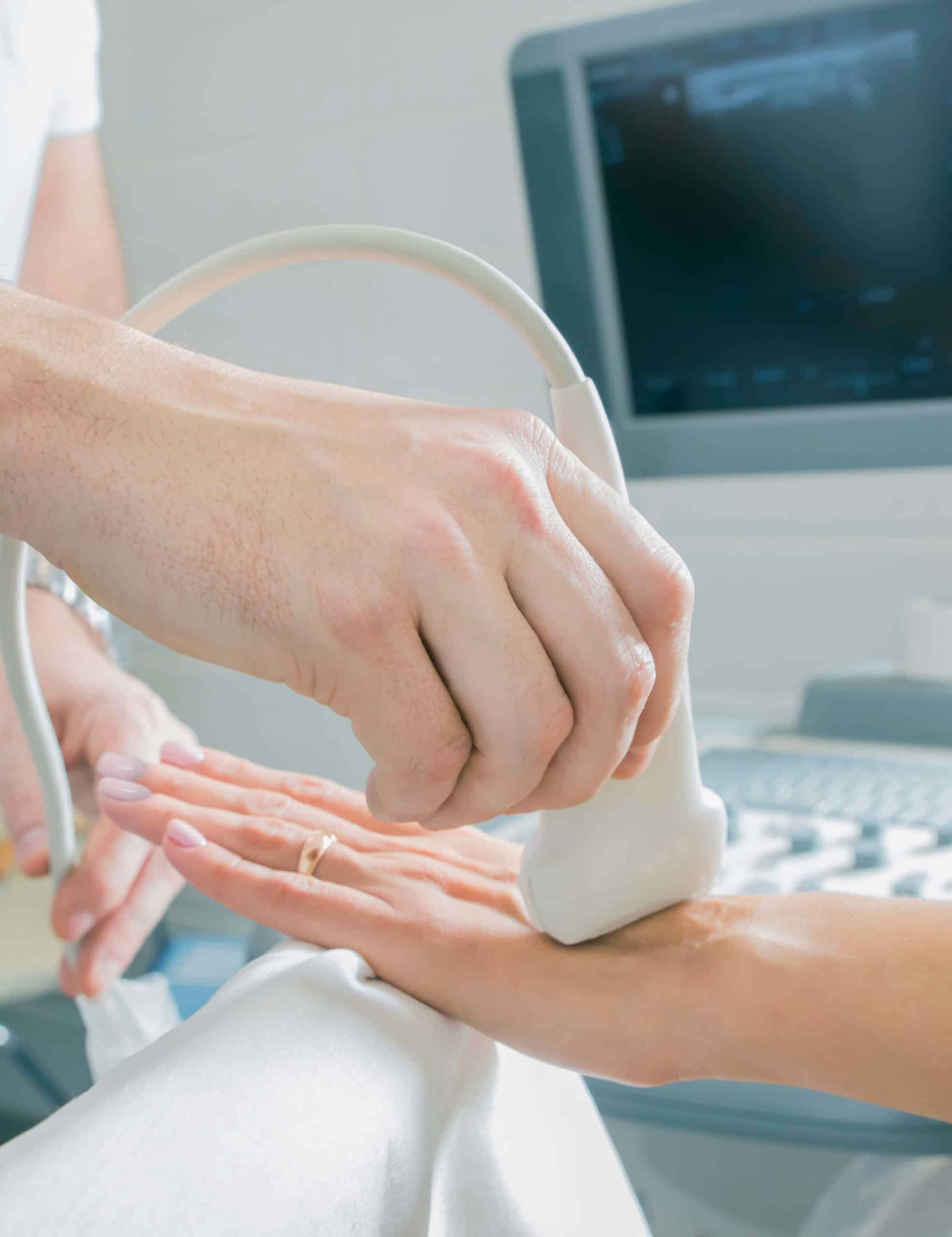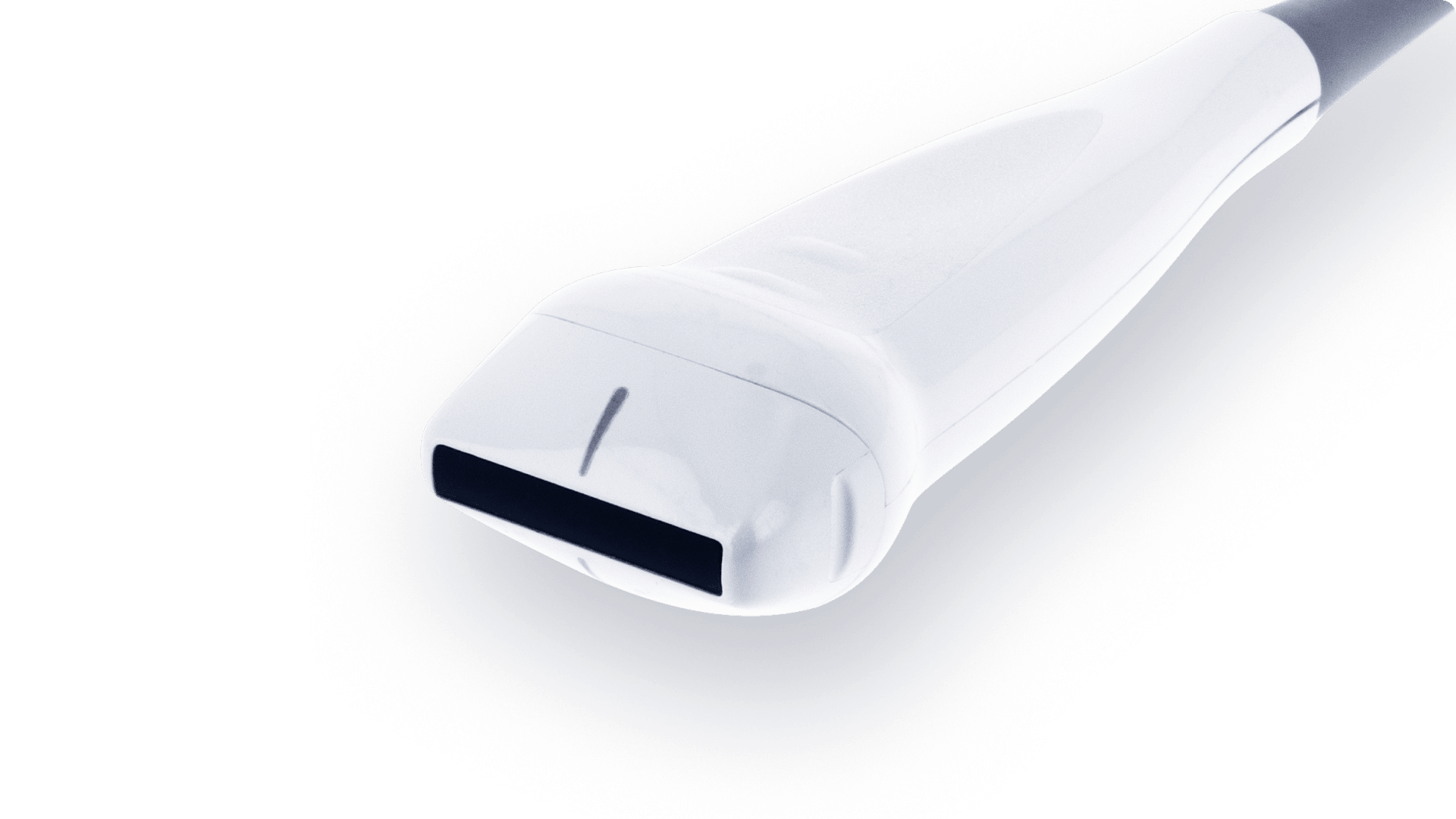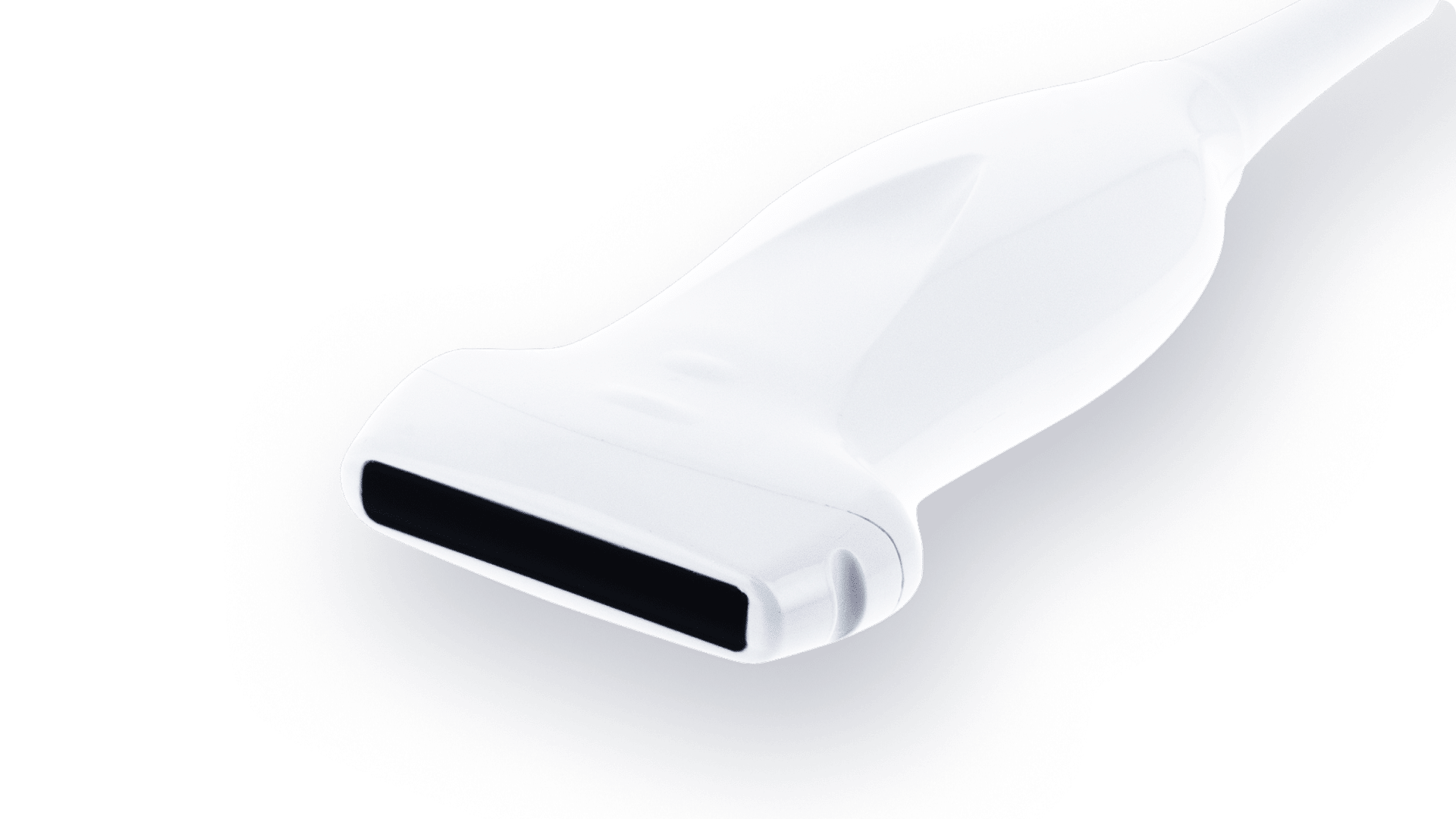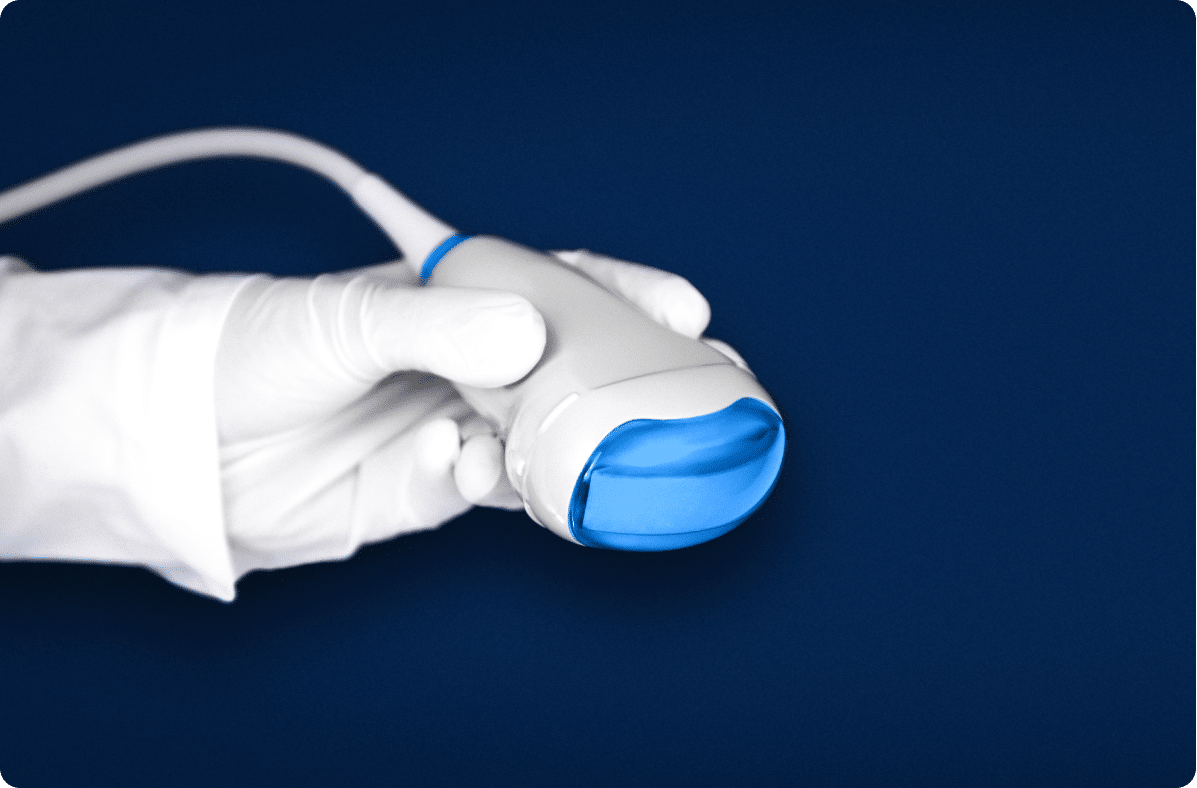Musculoskeletal
Ultrasound has become an effective and reliable imaging method of the diagnose pathway for patients affected with MSK complaints in upper and lower limbs, mainly related to sports injuries or work-related factors.

Musculoskeletal
For musculoskeletal (MSK) examinations, high-frequency linear array probes above 14.0 MHz are typically used to capture near-field great detail images.
To achieve precise evaluation of the superficial structures of fingers, hands, and wrists including ligaments and tendons, it is recommended to use high-frequency linear array ultrasound probes at central frequencies from 14.0 MHz to 18.0 MHz.
Doppler techniques assist in the evaluation of vascularity, particularly in conditions such as tendinopathy.
Hockey-stick high-frequency probes are ideal for detailed imaging of fine structures, offering a focused field of view, effective skin contact and good maneuverability, especially in peripheral extremities.
For examining ankles, feet, and elbows, a linear probe with a minimum frequency of 10.0 MHz is used to dynamically study soft-tissue lesions.
In the case of shoulders and knees, probes of at least 8.5 MHz are advisable for deeper penetration, despite a slight compromise in image resolution.
1
Musculoskeletal
Recommanded probes :

HF Linear Array – 18.0MHz – 256 elts
LA 18.0/256-SiX
-
Center Frequency 18.0
-
Number elements 256
-
Pitch 0.1
-
Radius curvature N/A
-
Transverse aperture 1.5
-
Focal Depth 8

HF Linear Array – 15.0MHz – 256 elts
LA 15.0/256
-
Center Frequency 15.0
-
Number elements 256
-
Pitch 0.15
-
Radius curvature N/A
-
Transverse aperture 3
-
Focal Depth 28












